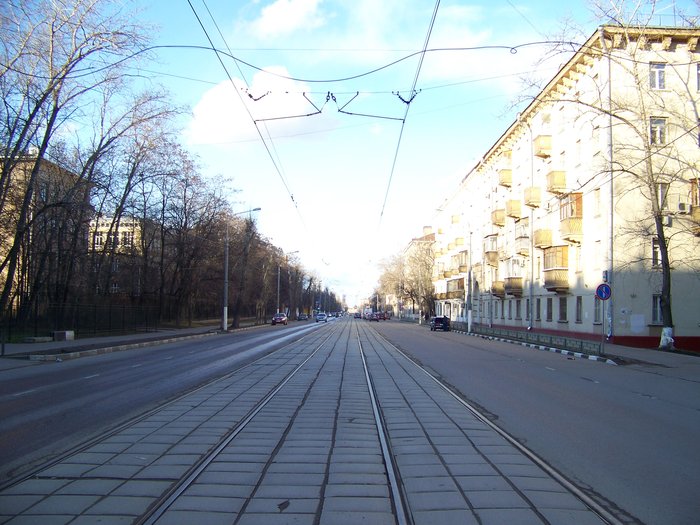
Hyperbolic geometry and dynamics:
talks and abstracts
Home | Venue | Schedule | Program
Sasha Ananin (ICMC-USP Sao Carlos)
Spherical and hyperbolic 2-spheres with cone singularities
We study a possible geometry on the space C(a_1,...,a_n)
of spherical or hyperbolic 2-spheres with cone points of
prescribed cone angles a_1,...,a_n and the corresponding
completions of this space. The euclidean case, considered
by W. Thurston, provides the famous 9 examples of
nonarithmetic compact holomorphic 2-ball quotients
constructed by Deligne-Mostow (when n=5). A geometry in
question is not unique (even in the flat case considered
by Thurston) and our main concern is to find a "good"
hyperbolic geometry on C(a_1,...,a_n) that may
conjecturally provide new examples of nonarithmetic
compact holomorphic 2-ball quotients.
This is a joint work in progress with Carlos H. Grossi,
Jaejeong Lee, and Joao dos Reis jr.
A geometry in question is not unique (even in the flat
case considered by Thurston) and our main concern is to
find a `good' hyperbolic geometry on $C(a_1,\dots,a_n)$
that may conjecturally provide new examples of
nonarithmetic compact holomorphic 2-ball quotients.
This is a joint work in progress with Carlos H. Grossi and
Jaejeong Lee.
Serge Cantat (Rennes)
Periodic points of automorphisms of projective surfaces (minicourse)
Let f be a holomorphic diffeomorphism of a complex projective
surface X. Consider its periodic points of period n: there are examples
for which the number of such points increases exponentially fast with the
period n. What can be said on the number of such points and on their repartition
in the surface X? I shall address this type of questions and explain how
ideas of complex analysis, algebraic geometry, and dynamical systems can
be combined in this context.
Simion
Filip
(University of Chicago)
Counting Techniques
It is classical (Gauss) that the number of integral
lattice points in the ball on the plane is quadratic in
the radius of the ball. One can address similar questions
about lattices in hyperbolic or more general homogeneous
spaces. The most effective tools involve a combination of
ergodic theory and geometry of negatively curved spaces. I
will explain some of the basic techniques that are used.
Simion Filip (University of Chicago)
The Multiplicative Ergodic Theorem (2 lectures)
The classical ergodic theorems of Birkhoff and von Neumann
say that averaging a function over an orbit of a dynamical
system converges, typically, to the average of the
function on the entire space. When sampling a
matrix-valued function along orbits, the asymptotic
behavior is described by the Oseledets Multiplicative
Ergodic Theorem. I will explain several proofs of this
result, including a generalization to sampling isometries
of non-positively curved spaces, due in various forms to
Karlsson, Margulis, and Ledrappier.
Alex Furman
(University of Illinois at Chicago)
1. Mostow rigidity
2. Locally symmetric metrics entropy minimizers after Besson-Courtois-Gallot
3. Quasi-isometric rigidity of lattices
Any compact surface of genus at least two admits a hyperbolic metric
(i.e. is covered by the hyperbolic plane); in fact, one has a whole
multidimensional family of such metrics - the Teichmuller space.
However, in higher dimensions, if a compact manifold admits a
hyperbolic (or other locally symmetric) structure, then it is unique.
This remarkable phenomenon, discovered by Mostow in the sixties, is
one of the cornerstones of modern hyperbolic geometry and geometric
group theory. In the talks I plan to discuss Mostow's Strong Rigidity
theorems, the work of Besson-Courtois-Gallot (that implies Mostow's
rigidity), and survey some quasi-isometric rigidity results pertaining
to lattices.
Vadim Kaimanovich
(Ottawa)
Boundaries in topology and probability
Usually one deals with boundaries in the topological setup
(for instance, the boundaries of various compactifications
of topological spaces). I will describe the measure theory
tools which allow one to define the so-called Poisson
boundary of a Markov chain in the measure category. I will
outline the relationship of this boundary with the
topological boundaries for random walks on groups with
hyperbolic properties and formulate the main problems in
this area.
Olivier Guichard (Strasbourg)
Hyperbolic groups and subgroups of Lie groups
The aim of those lectures is first to give different
characterizations of convex-compact subroups in terms of
their action on the hyperbolic space or on the sphere at
infinity and second to address the situation in higher
rank exhibiting rigidity results as well as flexibilty
phenomenon for the action on symmetric spaces and on flag
varieties.
Dmitry
Kleinbock (Brandeis)
Hyperbolic dynamics and intrinsic Diophantine approximation
Dynamics on homogeneous spaces of Lie groups has been a
useful tool in solving many previously intractable
Diophantine problems. In this talk I will describe some
existing connections between homogeneous dynamics and
Diophantine approximation, and then show how a similar
approach can help quantify the density of rational points
on quadric hypersurfaces (intrinsic approximation
problems). The case of spheres is reduced to dynamics on
hyperbolic manifolds. The new work is joint with Lior
Fishman, Keith Merrill and David Simmons.
Andrei Malyutin (PDMI)
Random walks and hyperbolic spaces
Random walks on groups is a subject at the intersection of probability,
group theory, geometry, etc. We are looking for new examples and
approaches in this area by examining group actions on various classes of
spaces. The core example here is the following case:
- (0) Isometric group actions on locally compact hyperbolic spaces.
We will discuss generalizations of some results obtained for the core case
(0) to the following cases:
- (1) Isometric group actions on spaces that are not locally compact.
- (2) Quasi-isometric group actions on (locally compact) hyperbolic spaces.
- (3) Continuous group actions on 0-hyperbolic spaces (R-trees).
Dmitri Scheglov (UFF, Rio de Janeiro)
Logarithmic angular diffusion for rational right
triangular billiards and high genus hyperelliptic
limit(s)
Recently a group of physicists numerically observed
peculiar ergodic properties of right triangular billiards(
both rational and irrational), which do not hold for
non-right triangles. In the joint project with G.Forni we
established this numerical conjecture for rational case,
which essentially amounts to splitting of KZ- cocyle on
absolute and relative component over hyperellyptic moduli
space.
I will also explain the current attempts to rationally
approximate the general ( irrational) case and some
partial progress.
Anatoly
Vershik (PDMI)
How to classify the filtrations, --- e.g.
the decreasing sequences of sigma- algebras or algebras
The Classification of the filtrations appears in the
theory of dynamical systems, statistical physics, theory of
stochastic processes and in classical analysis. This is the
art of general problem: how to make the link between
classification of finite faminlies of the pbjects and
classification of infinite families. The main question:
what one must add to the set of finite invariants and when
we do not need the new invarinats. Classical example of
the case of absense of new infinite invariants is
Kolmogorov's (1933) zero-one law for Bernoulli scheme. But
very often we need in the "highest" invariants.
I will tell about this problem in the framework of
asymptotic studies of combinatorics and probability
theory. No special knowledge is needed for
understanding of this talk.
 Home | Venue |
Schedule | Program
Home | Venue |
Schedule | Program


